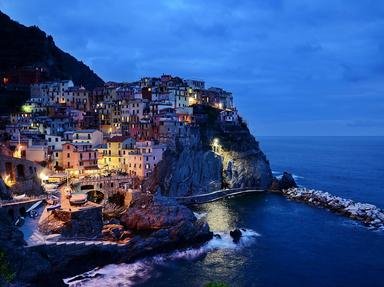Quiz Answer Key and Fun Facts
1. Which of these islands in the Mediterranean Sea is also one of Italy's twenty regions?
2. Which of these famous Italians was one of the leaders of the Risorgimento, the movement that led to Italian unification?
3. Italy has given birth to many eminent scientists. Besides his invention of the electric battery, Alessandro Volta is also credited with the discovery of what chemical compound - the main component of natural gas?
4. "The Decameron" is a collection of stories written by Giovanni Boccaccio in the 14th century. What notorious disaster, which caused millions of deaths throughout Italy and Europe, provides the setting for this iconic work of literature?
5. There are many English words of Italian origin that do not relate to food or music. Which of these words, denoting a yellowish-brown earth pigment, comes from the name of a historic city in Tuscany?
6. No quiz about Italy would be complete without a mention of pasta. Which of these popular pasta shapes are named after their ridged surface rather than a part of the human body?
7. The magnificent Palladian villas, a major source of inspiration for many British and American architects, can be found in which northeastern Italian region, whose capital is one of the world's most renowned tourist destinations?
8. Starring Burt Lancaster, "The Leopard" ("Il Gattopardo") is regarded as one of the greatest films ever made. Which great Italian director and scion of a noble Milanese family, also known for "Senso" and "Death in Venice", directed it in the early 1960s?
9. Though Italy is the birthplace of opera, many famous Italian operas are set in foreign locales. One notable exception is one of Giacomo Puccini's most enduringly popular works, set in Rome during Napoleon's invasion of Italy. What is its title?
10. Italians are known for their love of soccer (association football). In which fashionable major city would you find Stadio Giuseppe Meazza, commonly known as San Siro - Italy's largest soccer stadium?
Source: Author
LadyNym
This quiz was reviewed by FunTrivia editor
agony before going online.
Any errors found in FunTrivia content are routinely corrected through our feedback system.
